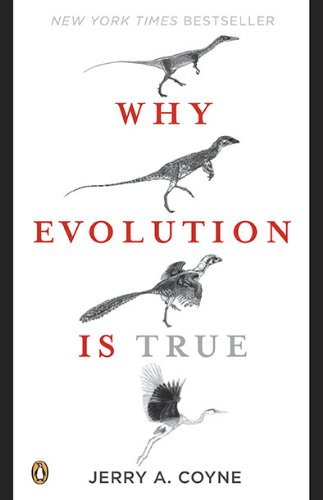Barriers that Keep Different Species from Interbreeding
What keeps members of two related species from mating with each other? There are many different reproductive barriers. Species might not interbreed simply because their mating or flowering seasons don’t overlap. Some corals, for example, reproduce only one night a year, spewing out masses of eggs and sperm into the sea over a several-hour period. Closely related species living in the same area remain distinct because their peak spawning periods are several hours apart, preventing eggs of one species from meeting sperm from another. Animal species often have different mating displays or pheromones, and don’t find each other sexually attractive. Females in my Drosophila species have chemicals on their abdomens that males of other species find unappealing. Species can also be isolated by preferring different habitats, so they simply don’t encounter each other. Many insects can feed and reproduce on only one single species of plant, and different species of insects are restricted to different species of plants. This keeps them from meeting each other at mating time. Closely related species of plants can be kept apart because they use different pollinators. Two species of the monkeyflower Mimulus, for example, live in the same area of the Sierra Nevada, but rarely interbreed because one species is pollinated by bumblebees and the other by hummingbirds.
Isolating barriers can also act after mating. Pollen from one plant species might fail to germinate on the pistil of another. If fetuses are formed, they might die before birth; this is what happens when you cross a sheep with a goat. Or even if hybrids survive, they may be sterile: the classic example is the vigorous but sterile mule, the offspring of a female horse and a male donkey. Species that produce sterile hybrids certainly can’t exchange genes.
Notes:
Different pheremones, blooming times, geographical isolation can keep members of two different species from breeding.
Folksonomies: biology species breeding
Taxonomies:
/science/biology/zoology/endangered species (0.624590)
/science/biology/breeding (0.520759)
/pets/reptiles (0.424826)
Keywords:
species (0.983424 (negative:-0.147757)), Closely related species (0.809452 (neutral:0.000000)), different species (0.724681 (negative:-0.203744)), different mating displays (0.647378 (neutral:0.000000)), different reproductive barriers (0.641751 (negative:-0.369875)), peak spawning periods (0.592699 (negative:-0.359208)), sterile hybrids (0.479454 (negative:-0.427194)), geographical isolation (0.476604 (neutral:0.000000)), Different pheremones (0.475306 (negative:-0.203744)), Animal species (0.474172 (neutral:0.000000)), Drosophila species (0.472115 (negative:-0.212149)), sterile mule (0.470067 (negative:-0.353314)), monkeyflower Mimulus (0.469424 (neutral:0.000000)), different pollinators (0.468850 (neutral:0.000000)), flowering seasons (0.462083 (neutral:0.000000)), single species (0.461529 (neutral:0.000000)), different habitats (0.461016 (neutral:0.000000)), several-hour period (0.459377 (negative:-0.726337)), male donkey (0.449713 (negative:-0.308439)), classic example (0.448525 (positive:0.485284)), exchange genes (0.445974 (neutral:0.000000)), Sierra Nevada (0.442547 (neutral:0.000000)), sperm (0.377777 (negative:-0.471904)), eggs (0.368156 (negative:-0.643990)), members (0.359286 (neutral:0.000000)), insects (0.358710 (negative:-0.594581)), interbreed (0.357939 (positive:0.266724)), area (0.356879 (neutral:0.000000)), plant (0.355693 (negative:-0.421883)), plants (0.350653 (neutral:0.000000))
Entities:
monkeyflower Mimulus:GeographicFeature (0.848612 (neutral:0.000000)), Sierra Nevada:StateOrCounty (0.717945 (neutral:0.000000))
Concepts:
Male (0.946839): dbpedia | freebase | opencyc
Reproduction (0.869463): dbpedia | freebase
Pollen (0.864213): dbpedia | freebase | opencyc
Female (0.781188): dbpedia | freebase | opencyc
Species (0.762436): dbpedia | freebase | opencyc
Flower (0.742820): dbpedia | freebase
Sex (0.721466): dbpedia | freebase
Organism (0.710267): dbpedia | freebase





